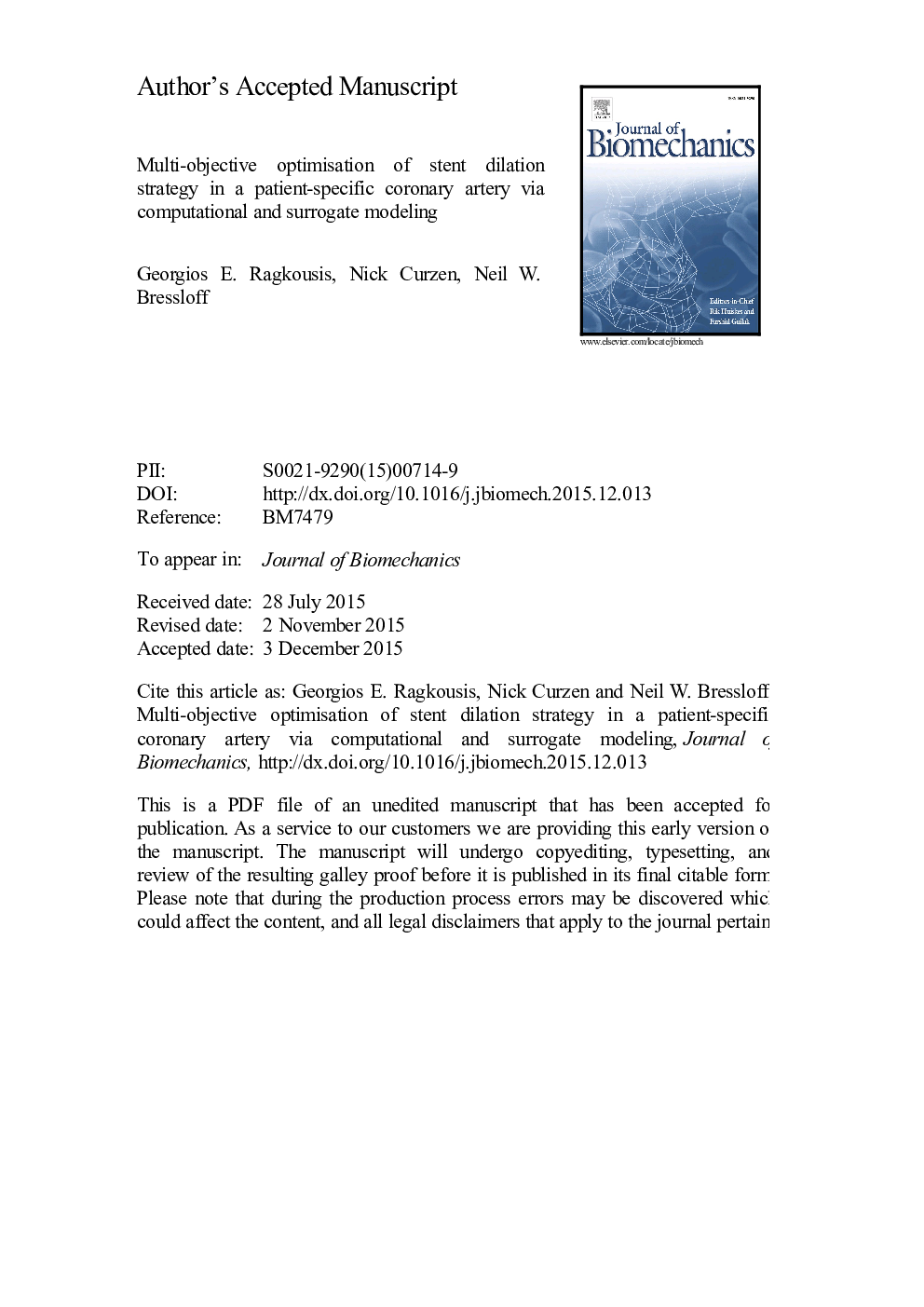| Article ID | Journal | Published Year | Pages | File Type |
|---|---|---|---|---|
| 10431167 | Journal of Biomechanics | 2016 | 23 Pages |
Abstract
Although contemporary stents have been shown to improve short and long term clinical outcomes, the optimum dilation protocol is still uncertain in challenging cases characterised by long, highly calcified and tortuous anatomy. Recent clinical studies have revealed that in these cases, sub-optimal delivery can result in stent thrombosis (ST) and/or neointimal thickening as a result of stent malapposition (SM) and/or severe vessel trauma. One of the major contributors to vessel trauma is the damage caused by balloon dilation during stent deployment. In the present work, a Kriging based response surface modelling approach has been implemented to search for optimum stent deployment strategies in a clinically challenging, patient specific diseased coronary artery. In particular, the aims of this study were: (i) to understand the impact of the balloon pressure and unpressurised diameter on stent malapposition, drug distribution and wall stresses via computer simulations and (ii) obtain potentially optimal dilation protocols to simultaneously minimise stent malapposition and tissue wall stresses and maximise drug diffusion in the tissue. The results indicate that SM is inversely proportional to tissue stresses and drug deliverability. After analytical multi-objective optimisation, a set of “non-dominated” dilation scenarios was proposed as a post-optimisation methodology for protocol selection. Using this method, it has been shown that, for a given patient specific model, optimal stent expansion can be predicted. Such a framework could potentially be used by interventional cardiologists to minimise stent malapposition and tissue stresses whilst maximising drug deliverability in any patient-specific case.
Related Topics
Physical Sciences and Engineering
Engineering
Biomedical Engineering
Authors
Georgios E. Ragkousis, Nick Curzen, Neil W. Bressloff,
